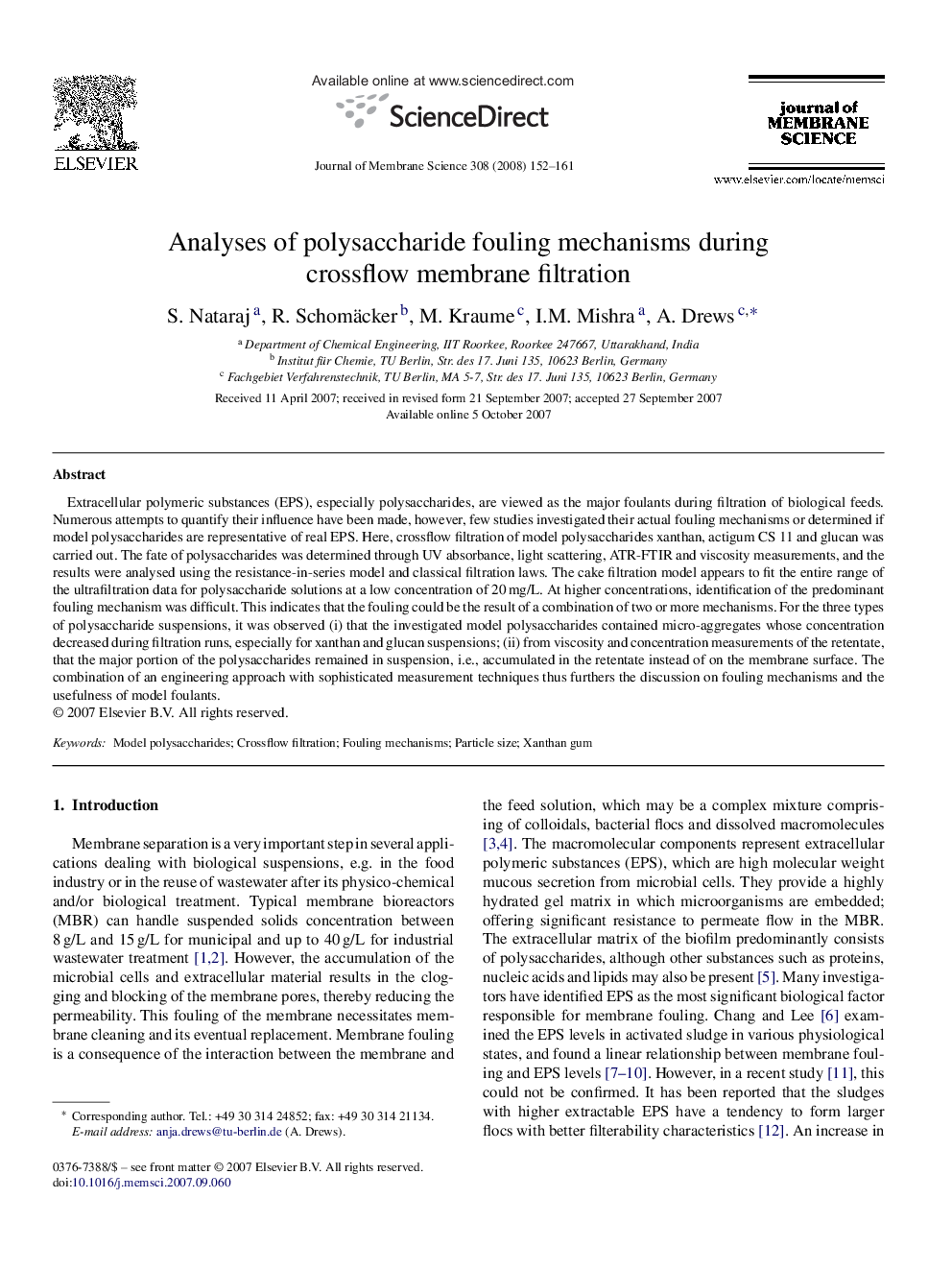| Article ID | Journal | Published Year | Pages | File Type |
|---|---|---|---|---|
| 638223 | Journal of Membrane Science | 2008 | 10 Pages |
Extracellular polymeric substances (EPS), especially polysaccharides, are viewed as the major foulants during filtration of biological feeds. Numerous attempts to quantify their influence have been made, however, few studies investigated their actual fouling mechanisms or determined if model polysaccharides are representative of real EPS. Here, crossflow filtration of model polysaccharides xanthan, actigum CS 11 and glucan was carried out. The fate of polysaccharides was determined through UV absorbance, light scattering, ATR-FTIR and viscosity measurements, and the results were analysed using the resistance-in-series model and classical filtration laws. The cake filtration model appears to fit the entire range of the ultrafiltration data for polysaccharide solutions at a low concentration of 20 mg/L. At higher concentrations, identification of the predominant fouling mechanism was difficult. This indicates that the fouling could be the result of a combination of two or more mechanisms. For the three types of polysaccharide suspensions, it was observed (i) that the investigated model polysaccharides contained micro-aggregates whose concentration decreased during filtration runs, especially for xanthan and glucan suspensions; (ii) from viscosity and concentration measurements of the retentate, that the major portion of the polysaccharides remained in suspension, i.e., accumulated in the retentate instead of on the membrane surface. The combination of an engineering approach with sophisticated measurement techniques thus furthers the discussion on fouling mechanisms and the usefulness of model foulants.
